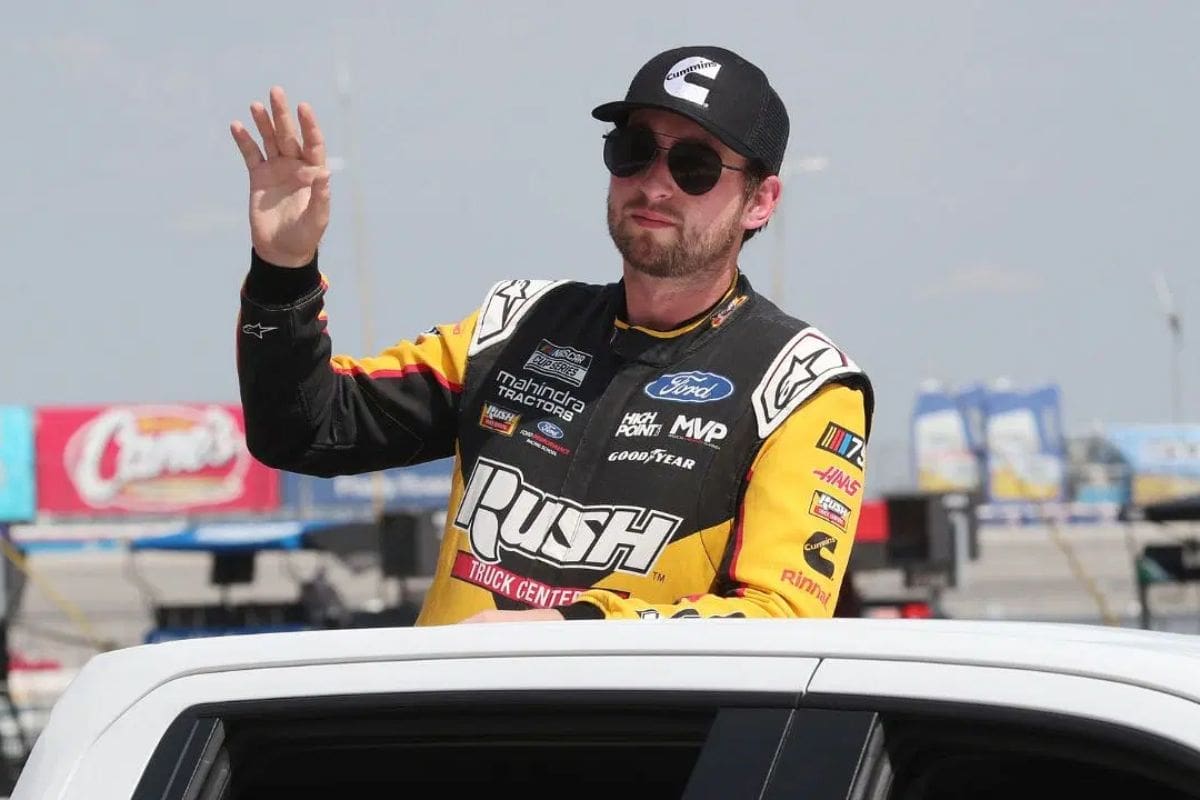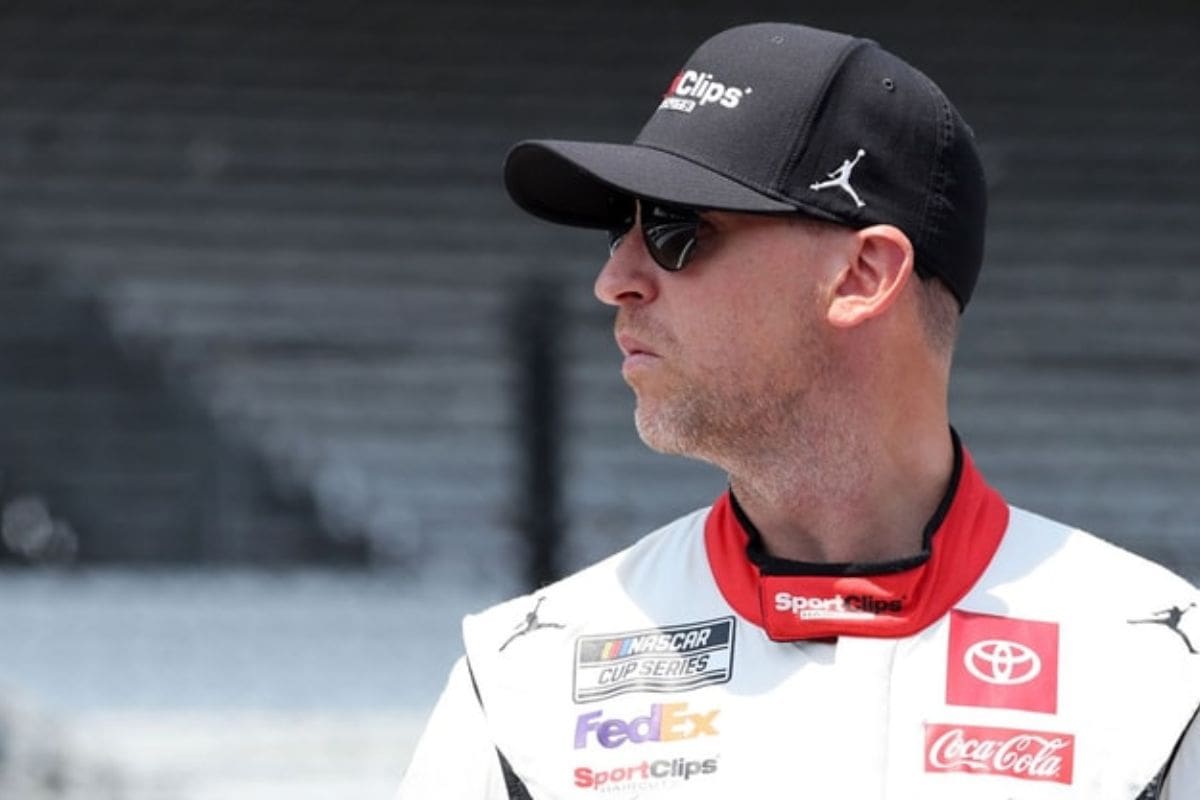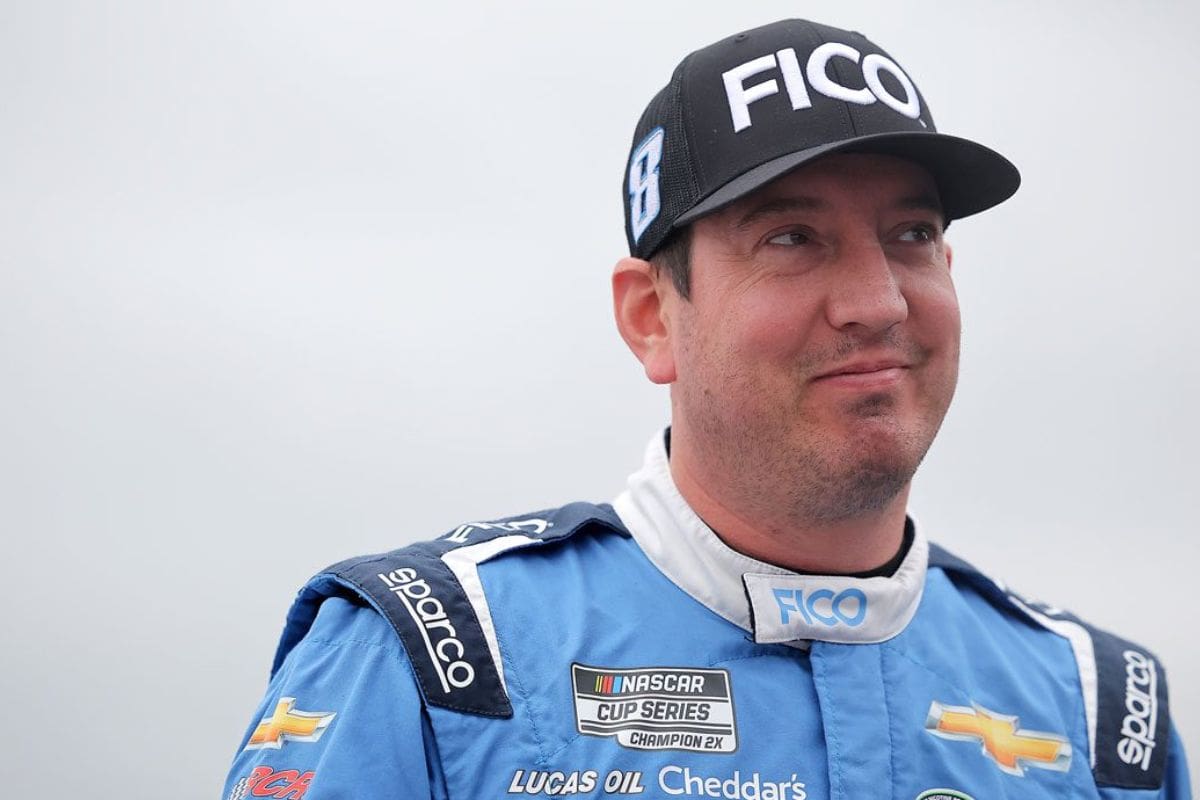Denny Hamlin’s Darlington Misjudgment: Denny Hamlin‘s aggressive handling at Darlington, aimed at overtaking Kyle Larson, serves as a crucial case study in the NASCAR racing. His misjudgment regarding Chase Briscoe‘s capabilities altered the path of his own race and inadvertently ensnared Kyle Busch in a collision that could have lasting implications for their playoff pursuits. This incident raises significant questions about the fine line between tactical aggression and reckless decision-making in racing. As the fallout unfolds, the implications of Hamlin’s choices extend beyond the track, prompting a reevaluation of competitive tactics in the sport.
Key Highlights
- Denny Hamlin’s aggressive strategy to overtake Kyle Larson distracted him from defending against Chase Briscoe, costing valuable seconds in the race.
- Hamlin’s decision to target Larson inadvertently opened a path for Briscoe, who executed a surprising three-wide pass to seize the lead.
- The collision between Hamlin and Kyle Busch stemmed from a miscalculation regarding playoff implications and the dynamics of the race.
- Limited communication with his team left Busch isolated during critical moments, negatively affecting his race performance and playoff chances.
- Hamlin’s tactical misjudgment not only impacted his race but also highlighted the risks associated with aggressive racing strategies in competitive scenarios.
Chase Briscoe’s Victory and Its Implications
Emerging victorious at Darlington, Chase Briscoe’s success marks a vital moment in his career and reshapes the competitive landscape of the 2024 NASCAR season. This unexpected victory signifies more than just a win; it serves as a critical shift in momentum for Briscoe and the Stewart-Haas Racing team. His ability to clinch his initial victory of the season amidst a field rife with challenges demonstrates both resilience and tactical skill, qualities that will be fundamental moving forward.
Briscoe’s performance at Darlington highlights the important interplay of driver skill and external race dynamics. His victory was notably influenced by the mid-race tactics employed by Denny Hamlin, whose focus on countering Kyle Larson inadvertently disrupted the playoff aspirations of Kyle Busch. This tactical miscalculation not only impacted Busch’s chances but also inadvertently paved the way for Briscoe to capitalize on the ensuing chaos.
As the 2024 season unfolds, Briscoe’s win could serve as a catalyst for renewed confidence among his peers within the Stewart-Haas Racing organization. It emphasizes the importance of adaptability and tactical thinking in a sport where races can turn on a single decision.
Additionally, the implications of this victory extend to the broader playoff narrative, as it alters the competitive calculus for other drivers who are now more acutely aware of Briscoe’s potential as a serious contender.
Denny Hamlin’s Decision-Making and Its Impact
The dynamics of race strategy are often subtle yet profoundly impactful, as evidenced by Denny Hamlin’s decision-making during the Darlington race. His choices not only shaped his own performance but also had noteworthy consequences for his teammate, Kyle Busch. As Hamlin raced in third behind Kyle Larson and ahead of Chase Briscoe, a pivotal moment arose that could have altered the path of the race for Busch, who ultimately fell short of a playoff spot.
Hamlin’s aggressive strategy against Larson, while understandable, inadvertently sacrificed the collective interests of his team. Such decisions, when analyzed, reveal the intricate balance between personal ambition and team success, emphasizing the weight of decision-making in motorsports. In this case, Hamlin’s misjudgment not only shaped his race but also cast a long shadow over Busch’s playoff hopes, demonstrating how interconnected the fates of drivers can be.
Denny Hamlin’s Tactical Choices During the Race
Often, Denny Hamlin’s tactical choices during the race reveal a complex interplay between calculated risks and situational awareness that can dictate the outcome for both himself and his team. His tactical decisions, particularly during restarts, are essential moments where the potential for gain often collides with the realities of competition.
“I had the second option to choose on the restart. Either the bottom front row or choose the top that, that, you know, for us that the numbers suggested that I needed to be fourth, so second car on the outside behind Larson when he restarted.” – hamlin
CHASE BRISCOE HOLDS OFF KYLE BUSCH AND RACES HIS WAY INTO THE PLAYOFFS! pic.twitter.com/AVst4Z4EFa
— FOX: NASCAR (@NASCARONFOX) September 2, 2024
In the recent race at Darlington, Hamlin faced a significant choice on the restart. He analyzed multiple factors before selecting his position:
- Positioning: Hamlin opted for the bottom row, reasoning that it would allow him to capitalize on the strength of Chase Briscoe.
- Short-Run Performance: Acknowledging Briscoe’s skill in short runs, Hamlin aimed to utilize that to challenge Larson.
- Speed Assessment: Hamlin identified his front-side speed as a weakness, which affected his ability to make aggressive moves post-restart.
- Statistical Insight: The numbers indicated that positioning himself fourth, as the third car on the outside behind Larson, would yield a competitive advantage.
- Risk Management: By choosing the bottom, he aimed to minimize risk while hoping for a tighter contest between Briscoe and Larson.
The Effect of Hamlin’s Decision on the Race Outcome
In racing, the wave effects of a single decision can dramatically alter the course of the competition, as evidenced by Denny Hamlin’s choice during the critical restart at Darlington. Hamlin’s calculated intent was clear: he aimed to capitalize on a potential skirmish between Chase Briscoe and Kyle Larson, hoping to exploit any opening that might arise. However, this choice backfired, ultimately reshaping the race’s path.
Instead of the anticipated battle allowing Hamlin to surge forward, the dynamics shifted unexpectedly. Briscoe, instead of being hindered, seized the moment, executing a remarkable three-wide pass in Turn 3 on lap 342. This bold action not only propelled Briscoe ahead of Larson and Ross Chastain but also granted him the lead, effectively altering the competitive landscape of the race.
Hamlin’s decision to forego the top row created an opportunity for Briscoe, who appeared unassailable in the closing laps. Meanwhile, Kyle Busch, despite his fervent efforts to close the gap, found himself outpaced and unable to reclaim the momentum he desperately needed.
The outcome demonstrates that Hamlin’s misjudgment not only prevented him from vying for victory but also thwarted Busch’s playoff hopes.
Kyle Busch’s Reaction and Future Outlook
Frustration was palpable for Kyle Busch following the Darlington race, where he found himself grappling with yet another disappointment in the Next-Gen car. Despite showing glimmers of potential late in the race, Busch’s performance overall fell short of expectations. His reflections on the race revealed a blend of disappointment and acceptance, acknowledging the difficulties he faced throughout the event.
“It’s fine, you know; we put ourselves in this position. Through much of that race, I didn’t think we had a shot to get ourselves a win and punch our way through. But with the tires there at the end and having an opportunity, it just put wind in our sails.” – Busch
Busch’s acknowledgment of his struggles was marked by an open assessment of his season:
- Consistently finishing in the top five yet unable to secure a win.
- A total of seven second or third-place finishes since his last victory in June 2023.
- The impact of tire management and car grip, especially in the final laps.
- Recognition of the statistics that reflect his challenges with the Next-Gen car.
- A resolve to maintain his streak of wins in every season since 2005.
“We put ourselves in this position, and through much of that race, didn’t think we had a shot to get ourselves a win and punch our way through. but tires there at the end, and having an opportunity also just put wind in our sails. But then once I got in the wind of the 14 car, I couldn’t do anything with it. You know, just lost too much grip and the wake on these things … he wasn’t blocking or anything, I just lost grip. That was all I had.” – Busch
While the results have been “disgusting” in his eyes, Busch’s maturity shines through as he focuses on the playoffs ahead.
“A lot of people are stat people. I’ve gone back and looked at the stats, and the amount of second- and third-place finishes I have in this Next Gen car is disgusting.” – Busch
Drove the heck out of it.
Had a shot at the end.@KyleBusch's bid for a spot in the #NASCARPlayoffs is over, but he brings home his second runner-up finish in as many races. pic.twitter.com/Xjv3N9ro7K
— NASCAR (@NASCAR) September 2, 2024
His recent string of strong finishes—three consecutive top-five placements—suggests that he possesses the capability to turn his fortunes around.
Looking forward, the playoffs will be a crucial test of his resilience and adaptability. The urgency to secure a win will drive him, but the path will require tactical navigation of the challenges presented by the Next-Gen car.
As Busch prepares for the upcoming races, both his mindset and performance will be essential in determining whether he can reclaim his position among the elite in NASCAR.
News in Brief: Denny Hamlin’s Darlington Misjudgment
Denny Hamlin’s aggressive pursuit of Kyle Larson at Darlington highlights the elevated stakes and inherent risks of competitive racing. Misjudgments regarding the capabilities of rival drivers, such as Chase Briscoe, can lead to unforeseen consequences, greatly altering race outcomes. The collision with Kyle Busch exemplifies how individual strategies can flow through the team dynamic, complicating playoff ambitions. Ultimately, this incident serves as a poignant reminder of the delicate balance between ambition and caution in motorsport decision-making.
ALSO READ: Denny Hamlin Breaks Down the NASCAR Playoffs and the ‘Wild’ Schedule Ahead




